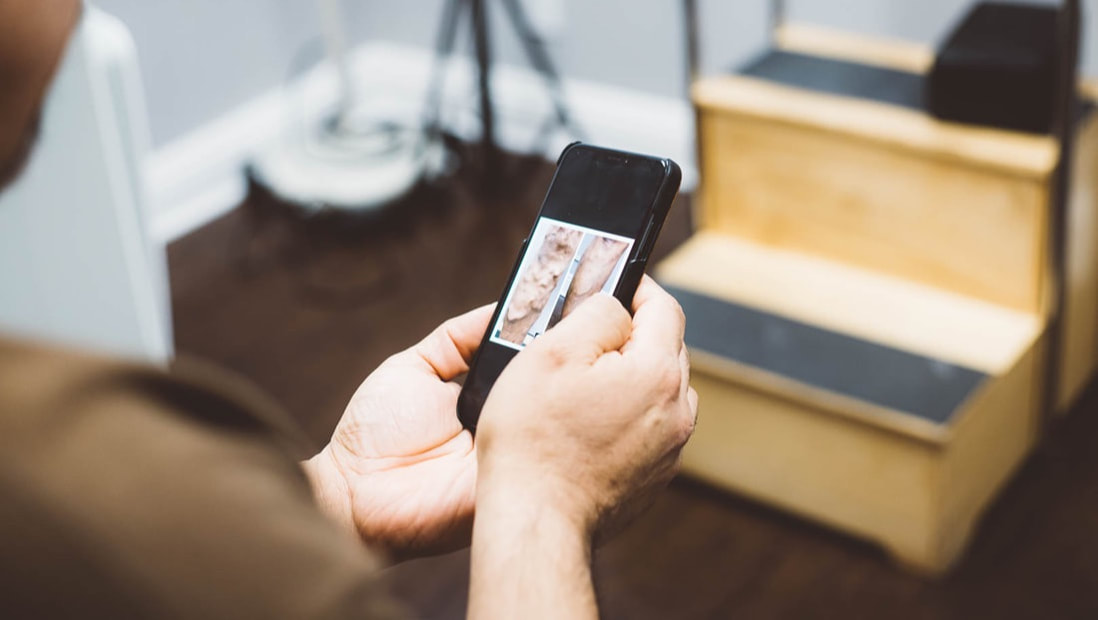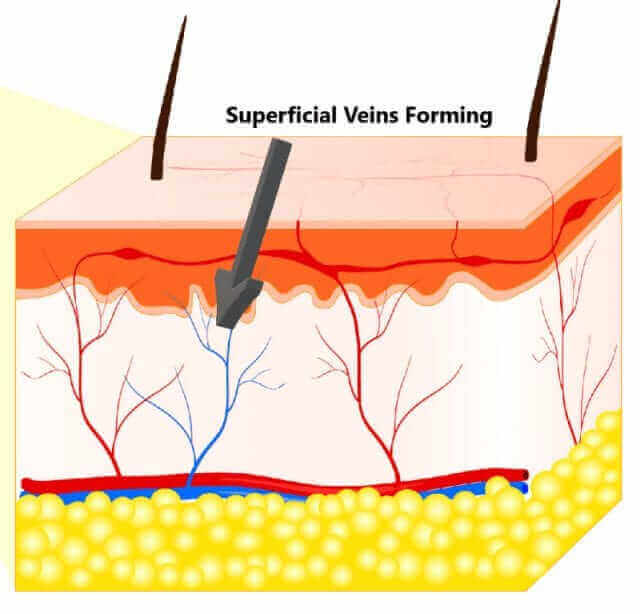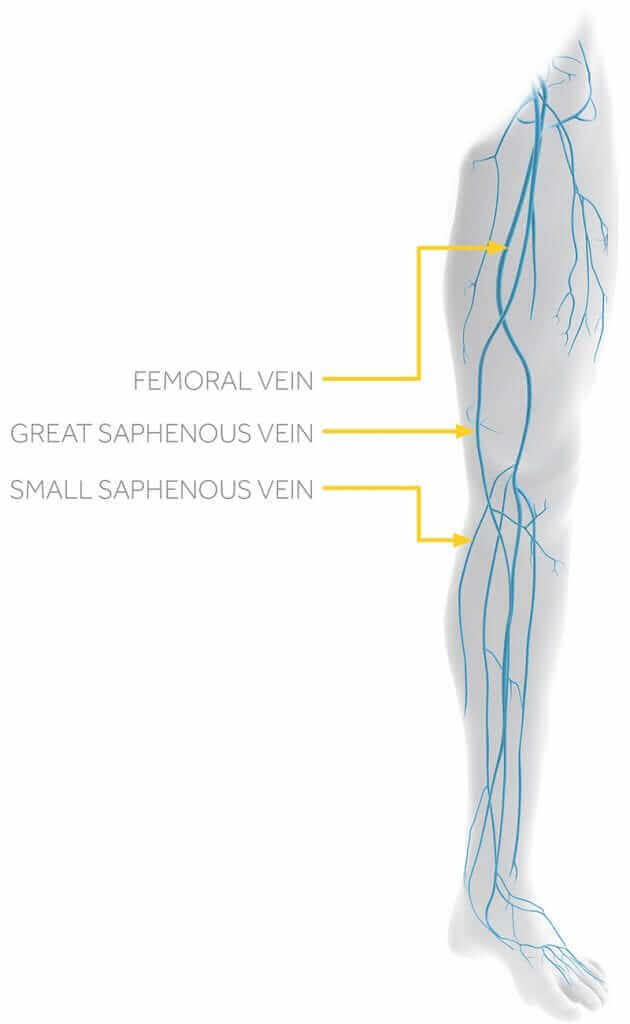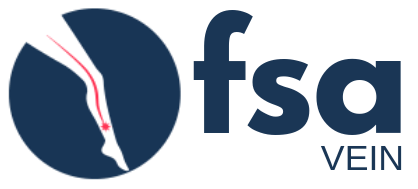VEIN DISORDERS
Varicose veins and visible, unwanted veins are a common concern that many people have. In the United States nearly 65% of the population have some degree of varicose veins. However, only about 2 to 3% of the population that would benefit from a venous procedure actually seek treatment. This is mostly due to the lack of information regarding the disease and the available procedures for intervention. We will help familiarize you with an understanding of venous disease and the cutting-edge technology we offer for therapy. Also, many people do not know that most vein disorders are covered by insurance. At FSA Vein in Pomona & Rancho Cucamonga, CA our goal is to help our patients understand vein disorders and venous disease as well as our cutting edge technologies and therapies for treating these conditions.
WHAT CAUSES VEIN DISORDERS?Varicose veins can affect both men and women. They can be caused by a range of factors including:
The most significant contributor is genetic disposition. Our veins contain valves that encourage blood flow to flow back up one way through the vein to the heart. A varicose vein or a diseased vein occurs when blood that is supposed to flow back up to the heart pools or gets trapped in the vein due to a damaged valve. The diseased vein can continue to worsen overtime. As a result, new veins are formed to decrease the built up pressure in the superficial venous system. The new veins are created closer and closer to the surface of the skin – causing them to eventually become visible. |
VEIN TYPESThere are three main vein types within the legs. These include:
Superficial Veins
|
RISKS ASSOCIATED WITH VARICOSE VEINS
When left untreated, varicose veins can negatively impact the overall quality of life. Varicose veins can lead to discomfort, skin changes, work absences, and significant medical and emotional disability as reflected by decreased scores on health-related quality-of-life surveys. Patients with varicose veins have an increased number of inflammatory and clotting markers.There are other more severe complications that can be associated with varicose veins which include ulcerations and clots in your deep veins. These clots can then travel to your lungs and they are called pulmonary embolisms.A recent study showed that among adults diagnosed with varicose veins, there was a significantly increased association of DVT (Deep Vein Thrombosis). The findings also noted a higher incidence of PE (Pulmonary Embolism).
Another risk of varicose vein disease is the formation of venous ulcers. Venous ulcers form on an area that has continuous trauma from blood that is sitting in one place without much movement. Think of it as how your hands look after you wash dishes in a sink with still water. Imagine doing that for years without taking a break… eventually your skin starts to break down. When this process happens on your legs, an ulcer will form. Ulcers are very difficult to treat with physical therapy or compression therapy because the underlying disease is not treated. The only way to treat the underlying disease is to close the diseased vein underneath the ulcer. The following pictures show before and after laser ablation treatments and grafting of venous ulcers.
Potential symptoms and risks include:
More serious risks include:
Venous disease is not cured on its own. The professionals here at FSA Vein are passionate about providing our patients with the latest and most effective treatments for vein disorders. If you are interested in learning more about vein disorders and our collection of innovative treatments, feel free to reach out to us and speak to one of our experienced professionals. Contact us today and schedule your consultation towards improved health and wellness.
Another risk of varicose vein disease is the formation of venous ulcers. Venous ulcers form on an area that has continuous trauma from blood that is sitting in one place without much movement. Think of it as how your hands look after you wash dishes in a sink with still water. Imagine doing that for years without taking a break… eventually your skin starts to break down. When this process happens on your legs, an ulcer will form. Ulcers are very difficult to treat with physical therapy or compression therapy because the underlying disease is not treated. The only way to treat the underlying disease is to close the diseased vein underneath the ulcer. The following pictures show before and after laser ablation treatments and grafting of venous ulcers.
Potential symptoms and risks include:
- Increased inflammatory and clotting markers
- Discomfort
- Skin changes
- Ulcers
- Clots
- Deep vein thrombosis
- Burning sensations
- Cramping
- Restless legs
More serious risks include:
- Clots in deep veins that can travel to the lungs
- Venous ulcers that are very difficult to treat
Venous disease is not cured on its own. The professionals here at FSA Vein are passionate about providing our patients with the latest and most effective treatments for vein disorders. If you are interested in learning more about vein disorders and our collection of innovative treatments, feel free to reach out to us and speak to one of our experienced professionals. Contact us today and schedule your consultation towards improved health and wellness.
Will My Insurance Cover The Treatments?
Given that this is a recognized disease, the treatments are covered by insurance if you meet certain criteria. You will be responsible for your plans deductible, co-payment, co-insurance. Our insurance specialist team will work with your insurance company. Many insurance policies dictate the order in which vein procedures can be performed. Our team will discuss the specific requirements of your insurance and work on a treatment plan that suits you.
If you do not want to go through insurance, we can create a payment plan for you.
If you do not want to go through insurance, we can create a payment plan for you.
SPIDER VEINS
Spider veins are small red, purple, or blue vessels that appear turned and twisted in the skin. Typically found on the legs and face, they can develop from weak or damaged valves as well as well as a final result of deeper diseased veins. They can also be caused by hormone changes, exposure to sun and injuries. While spider veins are not typically cause for concern, they can pose a detriment to your aesthetic.
VARICOSE VEINS
Varicose veins are raised, large, swollen vascular vessels that appear twisted and turned through the skin’s surface. While they generally develop in the legs, they can appear on the face, as well. Their development is often the result of damaged or weak blood valves along with other factors, some of which include: family genetics, occupations that involve lots of standing, obesity, hormone shifts, and certain conditions that increase pressure in the abdomen such as constipation, tumors, and external garments of tightly-fitted clothing. What separates spider veins from varicose veins is that unlike spider veins, varicose veins may cause discomfort, heaviness, or swelling of the affected area. Varicose veins may also pose a risk of a compromise in one’s blood circulation.
The most common treatment for spider veins and varicose veins involves injecting a solution into the vein causing it to collapse and eventually fade. Laser treatments are also sometimes used for spider vein treatment. At FSA Vein in Pomona Ca, we specialize in both treatment options.
The most common treatment for spider veins and varicose veins involves injecting a solution into the vein causing it to collapse and eventually fade. Laser treatments are also sometimes used for spider vein treatment. At FSA Vein in Pomona Ca, we specialize in both treatment options.
Will Varicose Veins Get Better By Themselves?
Venous disease does not simply improve by itself. You can control for symptoms with the use of compression stockings and lifestyle changes such as weight loss and exercise.
There have been a number of trials that showed that non-procedural interventions such as compression therapy and lifestyle changes do not offer a long-term solution to the disease. Interventions such as the Endovenous Laser Ablation showed significant improvement in quality of life and symptom relief.
There have been a number of trials that showed that non-procedural interventions such as compression therapy and lifestyle changes do not offer a long-term solution to the disease. Interventions such as the Endovenous Laser Ablation showed significant improvement in quality of life and symptom relief.
Dr. Harish Yalamanchili
Take the next step and book your consultation with Dr. Yalamanchili. We have vein treatment clinics in Pomona, CA and Rancho Cucamonga, CA. Contact us today!





